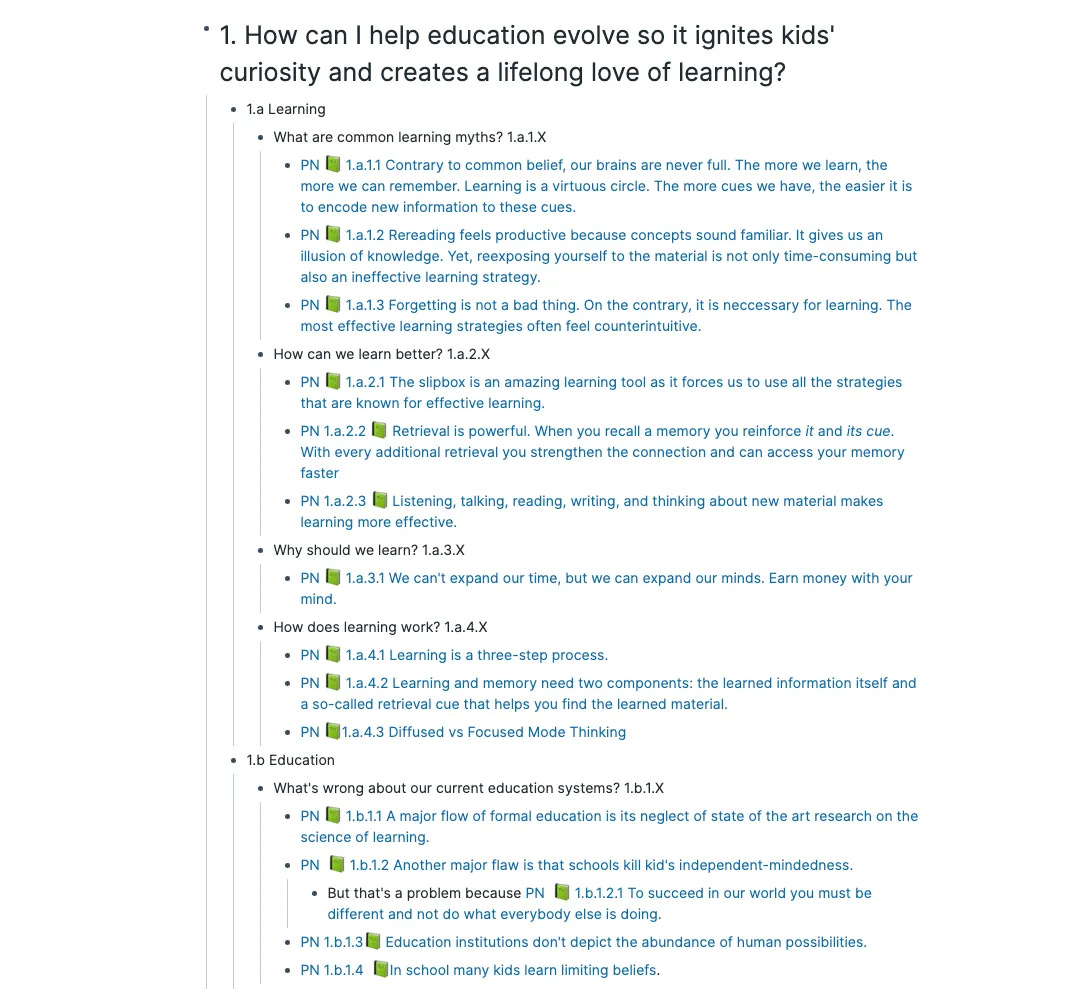When Being the Expert Backfires (And What to Do Instead)
The neuroscience of collective learning.
In my early twenties, I thought being useful meant being the one with the answers.
Whether I was working at a fintech startup in Frankfurt or walking into meetings in a Shanghai bank tower, the message was clear: Speak up. Sounds smart. Take credit.
I didn’t like it. But I thought I must play the game. Books like Nice Girls Don’t Get the Corner Office told me how.
It took years to realize there was another way to work. One that didn’t rely on performative certainty or solo brilliance.
Today, as an independent researcher working across ecosystems, I spend more time learning in public than pretending to have it all figured out. I’ve seen what becomes possible when people let go of being right and start being real.
With Big Change and partner organisations, I co-wrote research grounded in lived experience, learning our way forward. At Teach For All, we’re deep into a collaborative inquiry into the activity of convening and its role in developing collective leadership to change systems.
This piece is for anyone who’s done pretending to have it all figured out.
Who’s ready to move beyond solo expertise and into something richer: spaces where people learn together, across difference, across roles, across not-knowing.
It’s about what becomes possible when we stop performing certainty and start building the conditions for shared inquiry.
What Science Says About Collective Inquiry (And Why It Works)
“Being on the same wavelength” is a measurable neurological phenomenon.
Researchers call it inter-brain synchrony. It’s a neural harmony that happens when people collaborate and their brain activity begins to align.
Using tools like EEG and fNIRS, scientists have observed this synchrony in classrooms, team meetings, and musical jam sessions
They’ve found that higher brain-to-brain synchrony is linked to:
Better communication (your brain predicts what others will say next),
Deeper empathy (especially for those with high emotional attunement),
Stronger learning (synchrony between student and teacher boosts retention),
And higher-performing teams (they sync more often and more deeply).
But this synchrony doesn’t show up in just any room.
It’s fragile.
It disappears in spaces where people feel judged, rushed, or ranked. It fades when performance outshines presence. And it dies when power dynamics dominate the conversation.
How to Cultivate Collective Inquiry
The science is clear: cognitive resonance thrives when...
Uncertainty is safe to express,
Dialogue flows both ways,
Shared goals anchor the exchange,
And people aren’t scanning for credit, but searching for clarity together.
But how do you cultivate this kind of collective inquiry in your specific context?
Here are some practical ways, grounded in principles that foster what some researchers call 'cognitive resonance'.
1. Take Your Team’s Learning Pulse
Instead of just tracking outputs, pay attention to signals of learning health:
Are people asking real questions—or just making statements?
Curiosity is a stronger indicator of team learning than cleverness.Is ambiguity welcomed—or avoided?
Progress often hides behind the phrase "we don’t know yet."Are ideas being cross-pollinated—or siloed?
Healthy teams build on each other’s thinking, not just their own
Tracking these patterns can reveal whether your environment is wired for insight or just execution.
2. Make Room for Shared “I Don’t Knows”
Whatever your role, resist the reflex to leap into answers. Instead:
If you’re building something new:
Hit pause before solution mode. Ask:
“What’s the key learning question we need to answer first?”
Try reframing meetings as “How might we… collectively?” workshops.If you’re teaching or facilitating:
Replace content delivery with co-discovery. Let small groups explore different angles of a complex question. Celebrate inquiry over quick conclusions.If you’re leading a team:
Use 1:1s to ask:
“What are you currently puzzling over?”
Normalize asking for thinking help, not just task help.
3. Embrace Evolving Questions
The most important questions rarely have single, neat answers.
As Rilke wrote: “Live the questions now.”
In practice, that means giving space to the kinds of questions that grow with you—that evolve your systems, your strategy, and your sense of what matters.
One of my learning questions is below. It’s changed shape over the years—and continues to guide my work.
When we embrace collective "not knowing" and learn through iterative, shared exploration, we as individuals, as much as our teams and organizations, don't just withstand shocks, they get stronger (Nassim Taleb's "antifragility").
The Bigger Picture: Scaling Collective Inquiry
What if the future didn’t hinge on having the smartest person in the room
but on learning together, at scale?
The rapid development of COVID-19 vaccines offered a glimpse of what’s possible when global communities rally around urgent, shared questions. But many of our most pressing challenges—AI safety, climate collapse, rising inequality—are even more complex. No single leader, team, or institution can solve them alone.
These challenges don’t need more lone geniuses.
They need collective inquiry at a global level.
That means creating conditions where it’s safe to say, “We don’t know yet—but we’re asking the right questions.”
It means trading performance for presence, certainty for curiosity, and competition for coordination.
Imagine if we applied this mindset to the most urgent risks humanity faces:
How do we ensure highly advanced AI systems align with human values, especially in novel, high-stakes situations, without evolving toward power-seeking behaviors that could lead to human disempowerment or extinction?
How can we fund and implement global mechanisms for equitable climate adaptation, especially for the most vulnerable communities, without reinforcing the very inequalities the crisis is worsening?
How do we break through political inertia and resource misalignment to act on climate solutions that are currently overlooked, underfunded, or strategically ignored?
How do we prevent the misuse of transformative technologies—from cyberweapons to synthetic biology—through coordinated global safety and governance standards?
And how do we recalibrate incentives so that progress doesn’t come at the cost of long-term survival?
These aren’t questions for individuals.
They’re questions for communities, coalitions, and collectives.
Your Turn: Spark Collective Inquiry
Progress doesn’t come from having the right answers.
It comes from creating the conditions for better questions to emerge.
So, I leave you with two:
What’s one learning question you’d love to explore—not alone, but with a room full of curious minds?
What’s one small step you can take this week to encourage more collective inquiry in your team or organization?
Sources
Czeszumski, A., Duman, D., König, P., & Wrede, B. (2022). A meta-analysis of fNIRS hyperscanning studies reveals robust evidence of interpersonal brain synchronization during cooperation. Neuroscience & Biobehavioral Reviews, 138, 104699. https://doi.org/10.1016/j.neubiorev.2022.104699
Dumas, G., Nadel, J., Soussignan, R., Martinerie, J., & Garnero, L. (2010). Inter-brain synchronization during social interaction. PLoS ONE, 5(8), e12166. https://doi.org/10.1371/journal.pone.0012166
Falcon, C., Liu, Y., & Hasson, U. (2025). Dispositional empathy predicts brain-to-brain synchrony in cooperative tasks. Social Cognitive and Affective Neuroscience, 20(1), 10–20. https://pubmed.ncbi.nlm.nih.gov/40368998/
Stephens, G. J., Silbert, L. J., & Hasson, U. (2010). Speaker–listener neural coupling underlies successful communication. Proceedings of the National Academy of Sciences, 107(32), 14425–14430. https://doi.org/10.1073/pnas.1008662107
Reinero, D. A., Dikker, S., & Van Bavel, J. J. (2021). Inter-brain synchrony predicts group performance in real-time problem-solving tasks. Current Biology, 31(2), 300–307.e5. https://doi.org/10.1016/j.cub.2020.10.064






What’s one learning question I’d love to explore with others?
What is emotion—really?
Not just how it feels, but what it means. I want to explore the hypothesis that emotions are epistemic signals—real-time feedback from the mind-body system about internal contradiction or coherence.
Here’s how I’ve been thinking about it:
Contradiction generates emotional “heat”—what we label as negative emotions.
A good explanation—one that makes sense of the contradiction—dissipates that heat.
What we call virtues are simply what flows in the absence of emotional turbulence:
Forgiveness is the absence of resentment.
Courage is the absence of fear.
Compassion is the absence of separation.
So the hypothesis is this:
Virtue is not an effort or a performance. It is what naturally emerges from clarity.
And emotions aren’t flaws to overcome—they’re tools of navigation. They show us where understanding is missing.
I’d love to explore this—challenge it, build on it—with others who are asking not just what to feel, but what emotion is for.